Hydroponic gardening - read this complete guide and you'll be able to successfully grow veg indoors all year
Hydroponic gardening is a genius way of growing fresh and healthy homegrown food and flowers indoors. It is so easy to do and you'll never buy bagged salad again
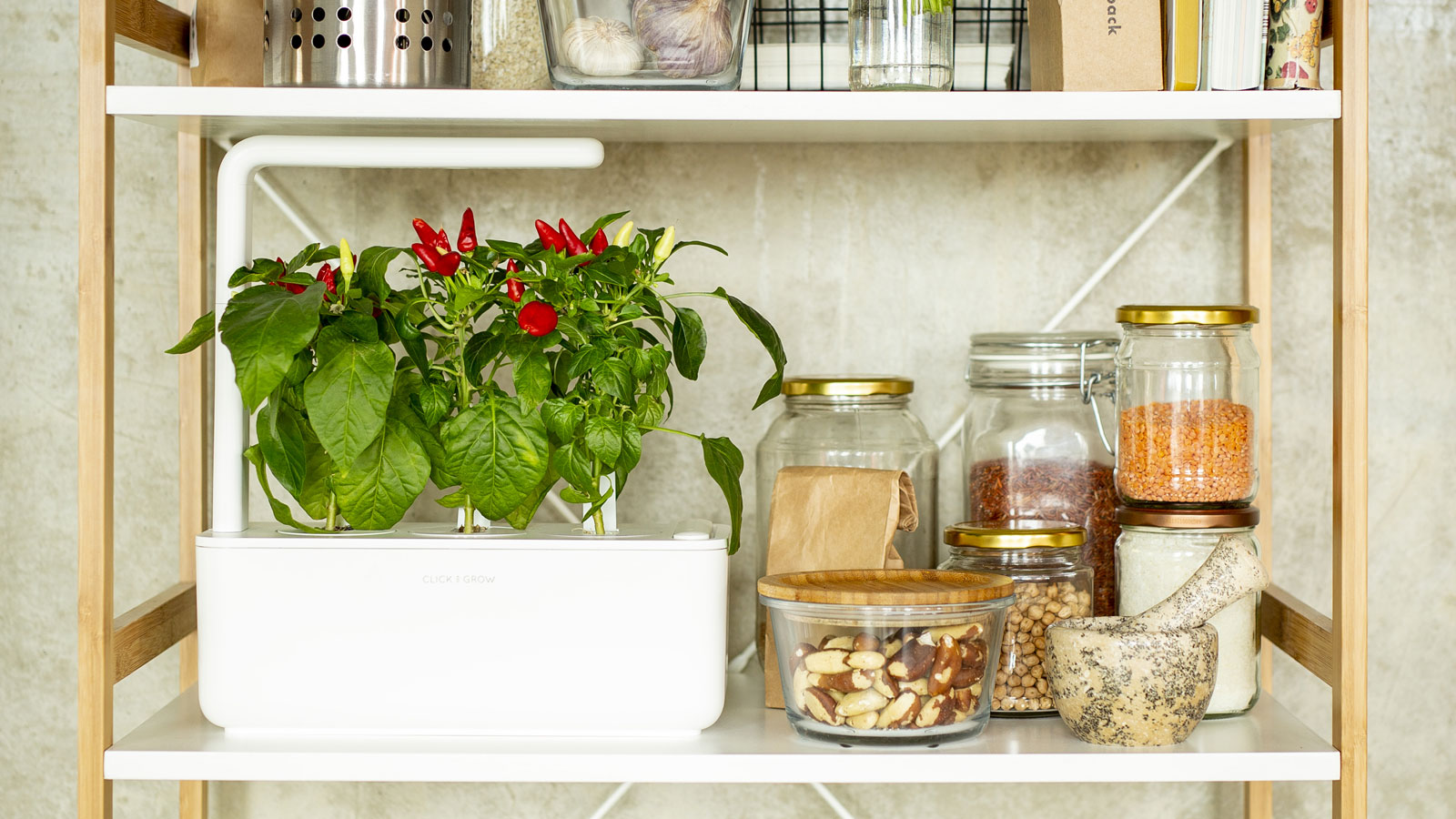
Hydroponic gardening has been steadily growing its fan base ever since the pandemic, when so many of us started getting into growing our own produce and being creative with crops in even the tightest of urban spaces.
It might sound a little scientific but simply put hydroponics is an indoor garden system of growing plants without soil, using water-based nutrients and LED lighting to produce fresh and nutritious home-grown food.
The good news is that hydroponics can be as simple as a Mason jar with a plant rooting in water on a sunny windowsill. Or you can aim big and scale things up with a more complex home set-up like a grow tower in an under-utilized corner of your apartment and add fancy grow lights to get your hydroponics show started.

What is hydroponic gardening?
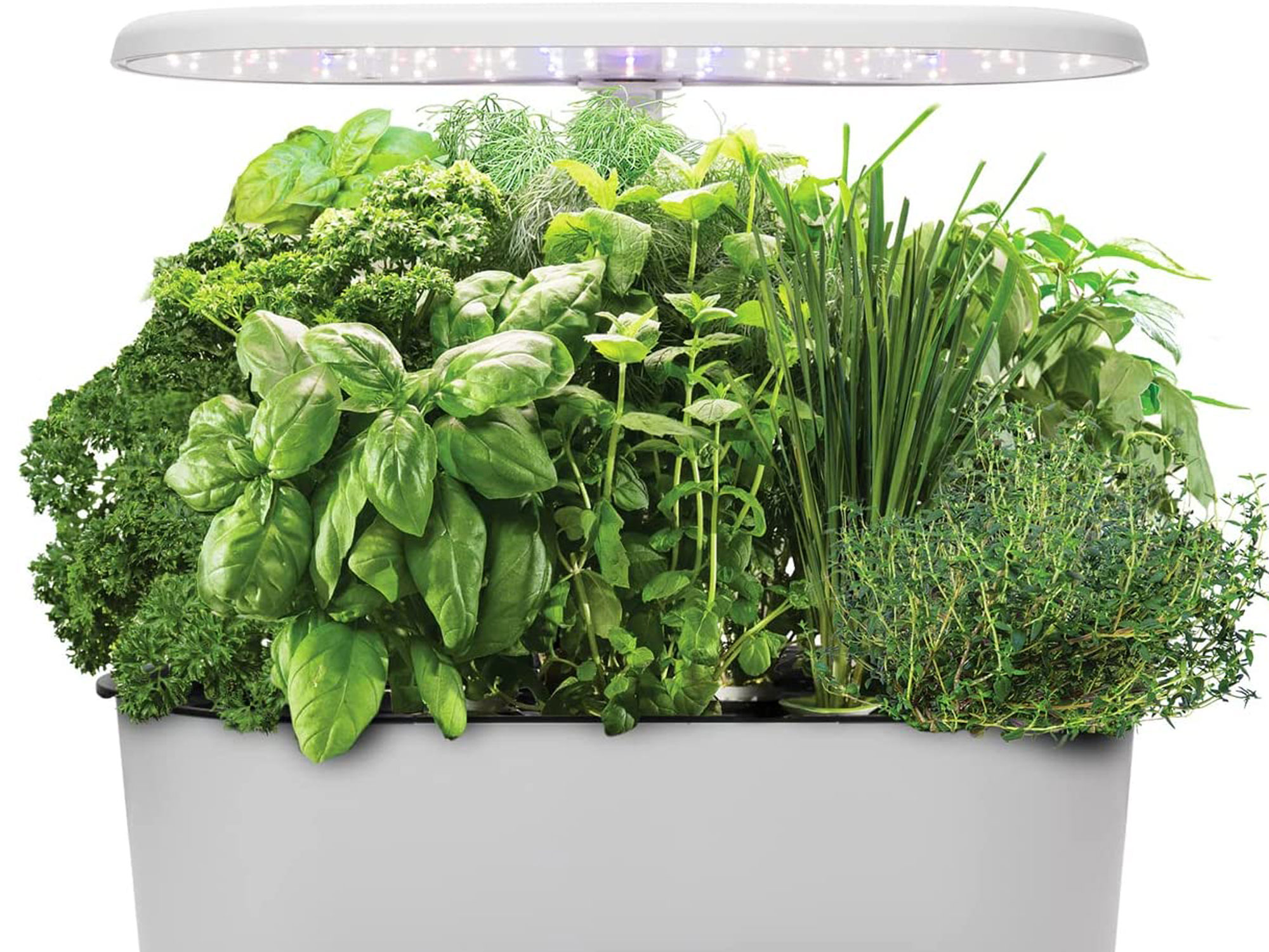
‘Hydroponic gardening is an innovative method of growing plants without the use of soil,’ explains Henry Bravo, who has a degree in Plant Sciences from the University of California, Davis and is the founder of SmartGardenHome. ‘Instead, plants are provided with nutrient-rich water, which allows them to grow faster and healthier than traditional soil-based gardening.’
One of the key benefits of hydroponic gardening is that it lets you control the environment, leading to higher yields and fewer pests or diseases. Also, hydroponic systems typically use less water than conventional methods, making them a more sustainable option. And it's so straightforward - there are many easy ways to start hydroponic gardening.
'Most hydroponic systems include a container for the plants (usually a tray or cups), a soil-less growing medium such as perlite or coco coir, a flow system for the nutrient solution that usually includes a pump, pipes, and a tank, and an LED plant light,' explains Mary Jane Duford, gardening expert at Home for the Harvest.
Basically you can find your own level with hydroponics, whether that's growing a small herb collection and wondering how to turn your windowsill into an indoor garden or year-round fresh strawberries, tomatoes or leafy greens in a bigger set-up.
The Livingetc newsletters are your inside source for what’s shaping interiors now - and what’s next. Discover trend forecasts, smart style ideas, and curated shopping inspiration that brings design to life. Subscribe today and stay ahead of the curve.
8 key things to know about hydroponics
Now our experts tackle the 8 most commonly asked questions about hydroponic gardening to help you get growing.
1. The easiest way to get started
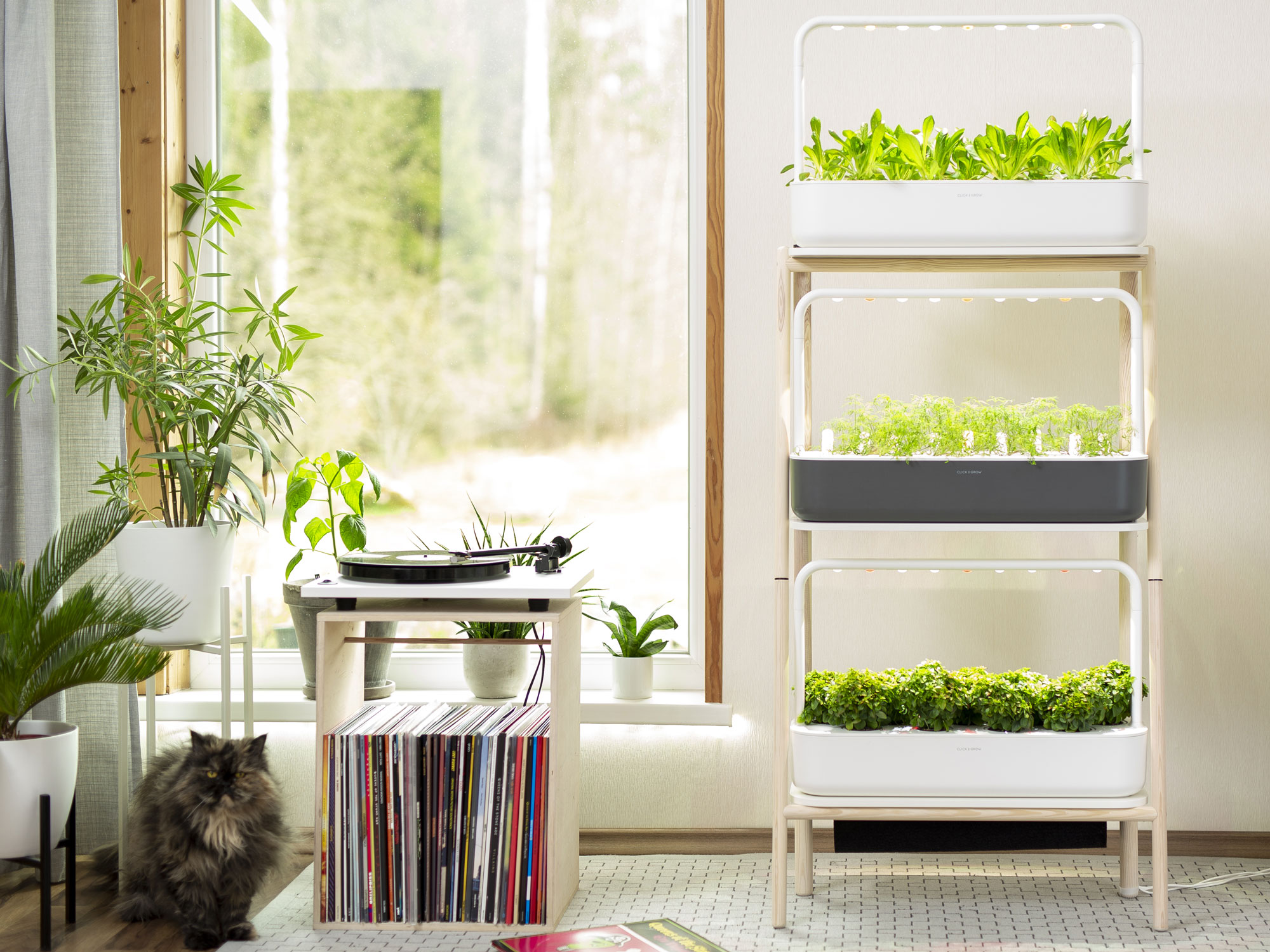
'If you want to buy an easy off the shelf system start with a tabletop hydroponic garden,' says Angelo Kelvakis, master horticulturalist and head of R+D for Rise Gardens. 'These come with lights, recirculating water, and enough seeds and nutrients to get started. This will be easy to set up and should be able to produce between 5-12 plants with very little effort.'
If you're looking to set up a larger garden think about purchasing a floor system with a large water reservoir, lights included, and the ability to grow 12-100 plants at a time. 'These systems are more expensive, but you'll get more produce,' says Angelo. 'There are several types of gardens out there, so go for companies with a wide selection of plants, multiple types of nutrients, and strong grow lights.'
If you're new to growing indoors, it's best to find a system that comes with a guided app to help you breeze through nutrients and plant care. Personally, I'm eyeing this neat countertop Wi-Fi and app controlled indoor hydroponic garden system system from Amazon to get started on my own growing mission.
2. You make your own basic hydroponic system
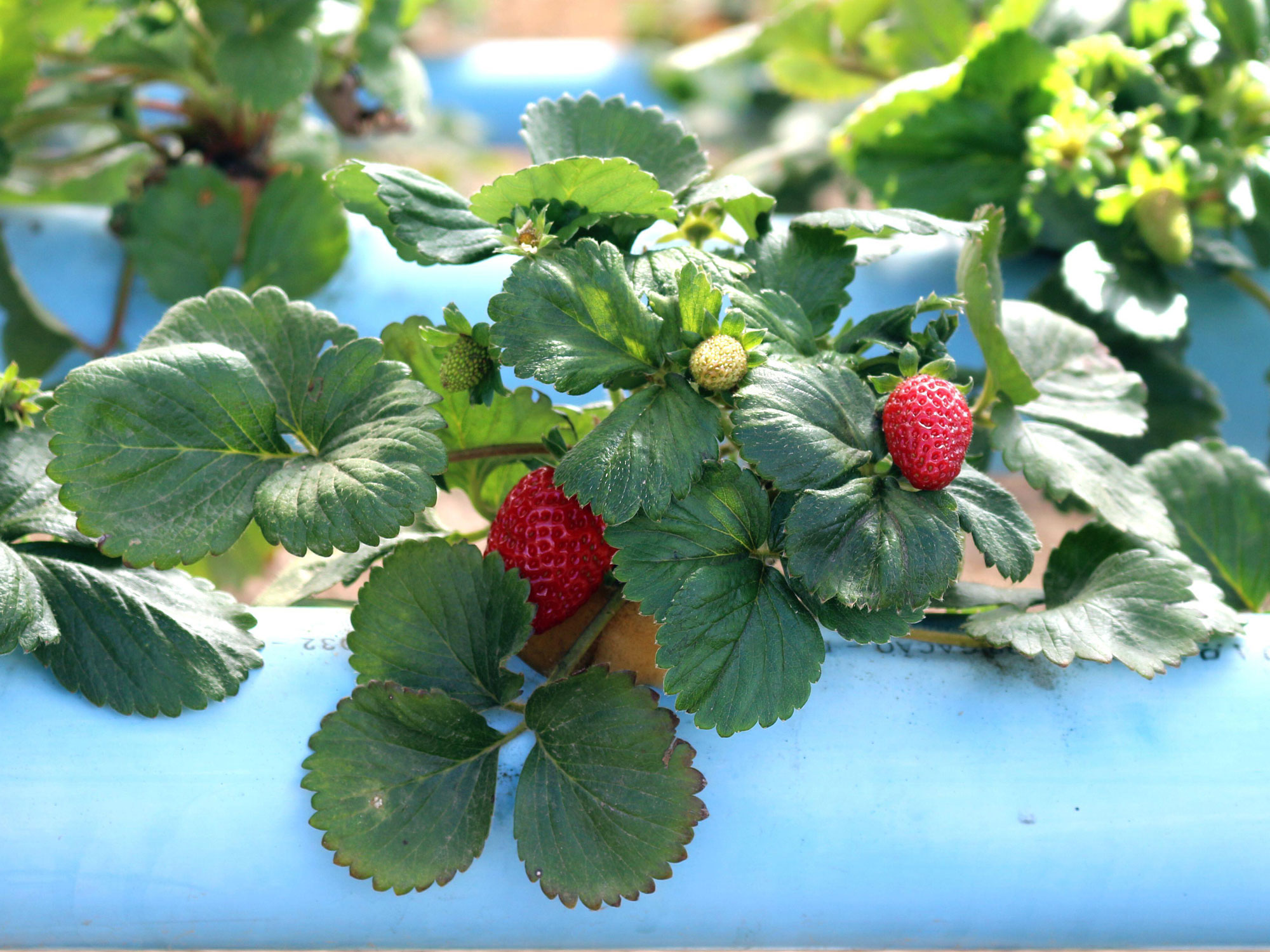
The answer to what you can grow in a hydroponic garden is - basically - anything. And you don't need fancy equipment to do it. For the most simple system of all start by experimenting with some glass jars and seedlings. You can create a mini hydroponic system by placing 1-2 inches of cold tap water into a jar, adding young plants, and placing them on your window sill. It's easiest to start with the herbs that grow best in a kitchen anyway, like mint, basil and parsley.
With a little bit more time and money, you can upgrade your indoor plant growing system to grow different herbs and greens from seed. In order to do so, you can purchase your own seeds, some hydroponic nutrients, and hydroponic plant plugs. The plant plugs are usually an organic matter made from coco coir.
'The seeds can be placed into the pod, and by cutting a hole into the lid of a plastic container, you can hang the plant plug into the lid so that just the bottom of the plant plug sits inside the water,' explains Angelo Kelvakis. 'Place it on a windowsill and add water and some nutrients once a week, and continue until your plant is big enough to harvest.'
There are many different types of hydroponic systems to choose from. Some of the most popular are deep water culture ones where plants are suspended with their roots submerged in a nutrient solution, drip systems where a nutrient solution is slowly dripped onto the growing medium, and ebb and flow systems where the growing tray is periodically flooded with nutrient solution, then drained.
3. You sometimes need a growing medium
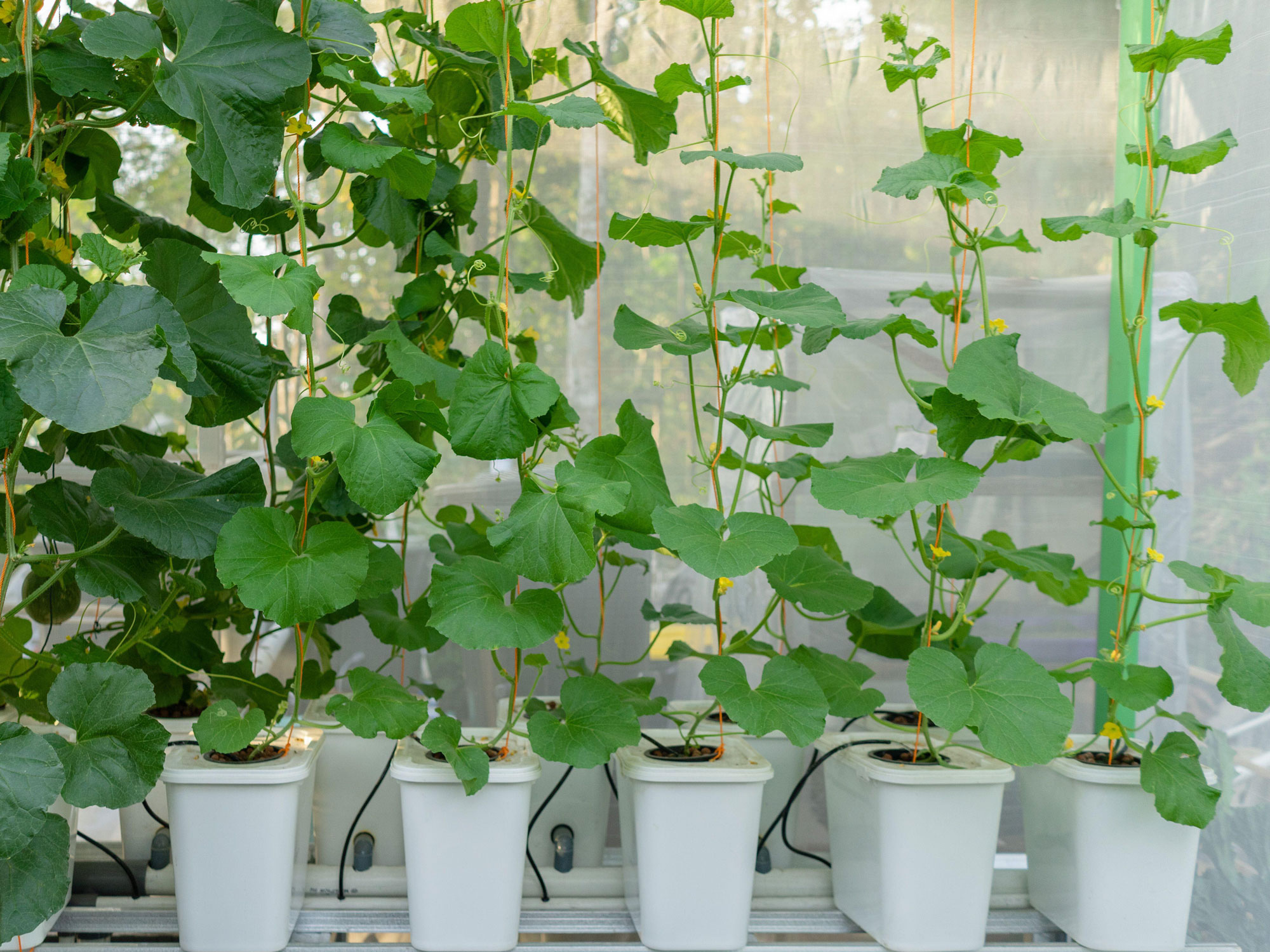
Rather than simply being suspended in water some plants need what's known as a substrate or growing medium to support their roots instead of soil. Popular materials include clay pebbles, perlite, vermiculite, coco coir, or growing sponges like these ones from Amazon. Typically these materials are porous and hold the nutrient-rich water that feeds the plants.
Choosing which one works best for you depends on what you're growing. Coco coir, perlite, and vermiculite tend to be the most common growing mediums for microgreens, as they have such a delicate root system. Meanwhile clay pebbles work well for strawberries, while spinach is best suited to coco coir.
At its simplest, you can grow hydroponically with a plant in a pot of perlite that you water regularly with a liquid fertiliser. Most systems are a little more sophisticated than this, however, but all will come with a clear indication which substrate is best.
4. Nutrient solutions can help
To grow well hydroponically, plants need a range of water soluble nutrients in various amounts, depending on the individual plant and its stage of growth.
'Hydroponic nutrients come in different forms, but there are two major characteristics that you should pay attention to when selecting the right one,' says Angelo Kelvakis.
'The most important is the difference between initial growth nutrients, and fruiting and flowering nutrients. Plants need a different ratio of nutrients when growing their flowers and fruits. This means you should expect multiple parts to your nutrients and to switch between these nutrients as your plants grow.'
The three main nutrients plants get from soil are nitrogen, phosphorus and potassium, while carbon, oxygen and hydrogen are absorbed from the air. Other vital soil nutrients include magnesium, calcium and sulphur.
These hydroponic nutrients from Amazon are particularly budget friendly.
'The other characteristic of hydroponic nutrients is the form they come in,' adds Angelo. 'Most hydroponic nutrients come in a liquid form, but some are a powder.'
5. The Kratky method is a big thing
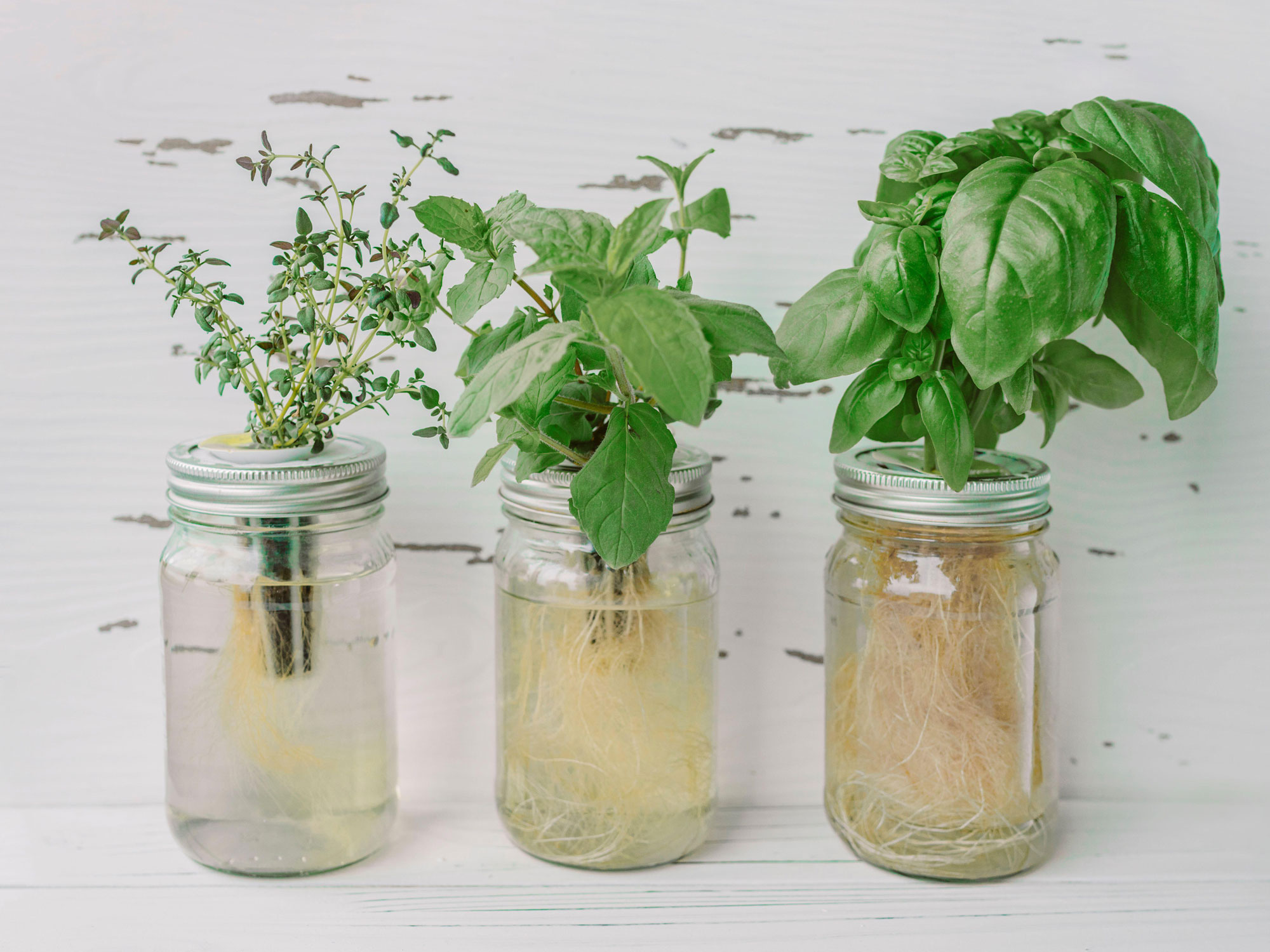
Google search hydroponics and you can't miss the mentions of the Kratky method. It's a hydroponic growing system developed in the 1990s by research scientist Dr Bernard Kratky, Emeritus Horticulturist at the University of Hawaii. It's the simplest of hydroponic systems and doesn't need complicated equipment or even electricity.
It's a great way for beginners to dabble in hydroponics, and quickly leads to vegetables you can grow indoors all year. The Kratky method works best with leafy greens, which enjoy a fast-growing rate. These include herbs, lettuce, and spinach. Start with soft-stemmed herbs such as basil, mint, cilantro, parsley and chives, as they’re usually quick-growing.
With the Kratky method, once you have set up your container and added a net cup containing a growing medium and your seeds or cuttings, then the water and nutrients, it takes care of itself.
Simply put your jar on a south-facing windowsill and watch the mass of roots unfurl into the water. By the time the water level is fully depleted, the plant should be ready to harvest. The water and nutrients don't need topping up after the initial set-up.
Water pH is important with hydroponic growing but less so with the Kratky method. You’ll still get good results with rainwater or bottled water.
6. You'll need lights

Although natural sunlight is the ideal lighting source for growing plants, it's also worth considering artificial lighting for indoor systems. Depending on what type of plant you want to grow you need to allow up to 14 hours of artificial light a day, followed by 10-12 hours of darkness.
First take into account how big your rig is and also what varieties of plants you want to grow. Some plants, like strawberries, will not fruit if they are exposed to more than 12 hours of light a day, while lettuce needs up to 18 hours a day. An electronic timer is a good idea if you're planning to grow a variety of different plants with varying light requirements.
'When using a hydroponic system, you will have running water and nutrients supporting the growth of your plants, but the lights are how your plants get their food,' says Angelo Kelvakis. 'Grow lights are specially designed to grow plants and have specialized spectrums of LED lights that support plant growth. Having strong enough lights will ensure that you are able to grow all types of plants.'
This grow light from Amazon is effective and affordable.
Plants like lettuce, basil, and arugula need lower intensity light than plants like cucumbers, tomatoes, and peppers, explains Angelo. 'Grow lights are usually described in their intensity for plants by the unit of measurement PAR (Photosynthetic Active Radiation). This measures the light that plants use for photosynthesis.
'Focused spectrum lights are also important for plant growth because plants only use specific wavelengths of light to perform photosynthesis (specifically red and blue wavelengths). This is why grow lights tend to look purple.'
7. There are some care tasks you'll need to perform
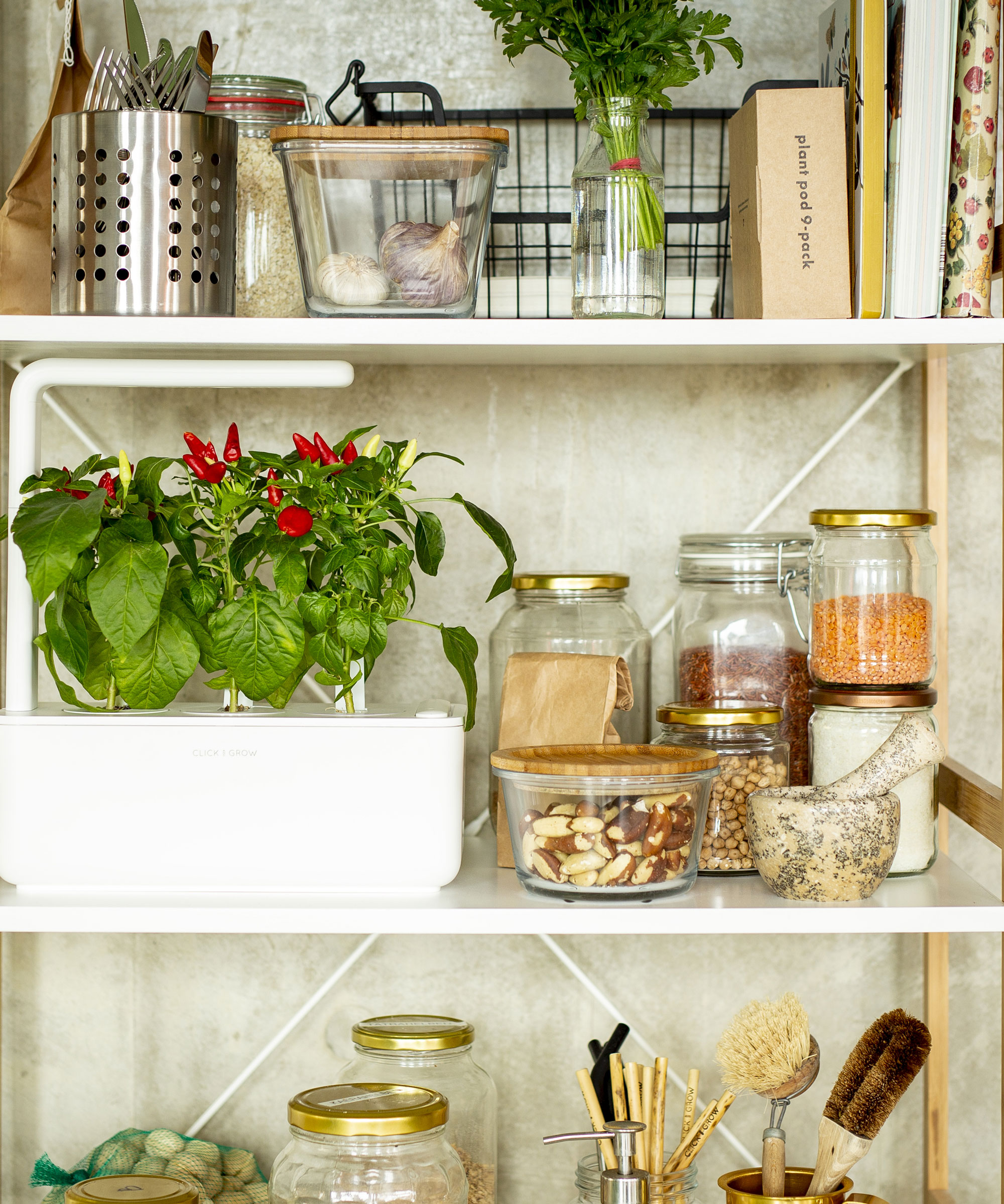
Even though you're growing in a controlled environment with hydroponics, you're still nurturing live plants, which need some help from time to time. So be sure to put together a weekly, monthly, and 6 monthly schedule to keep on top of maintenance.
Every week add nutrients and water to your garden, along with harvesting any plants that are ready. Every month, prune spent stems and clear dead leaves. Close to the 6 month mark, do a complete reservoir change as nutrients can build up over time and can impact the growth of your plants. It's also a good idea to set up your hydroponic garden close to a sink where you can easily clean the parts.
What are the advantages to hydroponic gardening?
'Hydroponic gardening offers a number of advantages over traditional growing,' says Nikki Thomas, co-founder of Backyardville. 'The direct delivery of a consistent supply of nutrients in hydroponic systems results in faster growth, and healthier and more robust plants too.
'The fact that this modern derivation of gardening is called "hydroponic" can lead to the belief that it consumes significant amounts of water and is, therefore, not very eco-friendly,' continues Nikki. 'In actuality, this is the ultimate water-efficient gardening practice as it requires less water than the traditional soil-based approach, enabling gardeners even in drought-prone regions or areas with limited access to grow their own produce.'
Hydroponically grown produce is also noticeably greener, healthier, and more nourishing due to the water recirculation system's ability to precisely control nutrient delivery to plants. The direct delivery of nutrients incorporated in the water means faster growth and healthier plants. So it's a win-win all round.
Lifestyle journalist Sarah Wilson writes about garden design and landscaping trends. She has studied introductory garden and landscape design, and also has an RHS Level 2 qualification in the Principles of Plant Growth and Development. She is a regular contributor to Livingetc.com, and also writes for Homes & Gardens, Country Living, Country Homes & Interiors, and Modern Gardens magazines. Her first job was at Elle magazine, during which time a trip to the beautiful La Colombe d'Or in St-Paul-de-Vence led to an interest in writing about all things botanical. Later as lifestyle editor at Country Homes & Interiors magazine one of the highlights were the run of captivating country gardens that were featured.